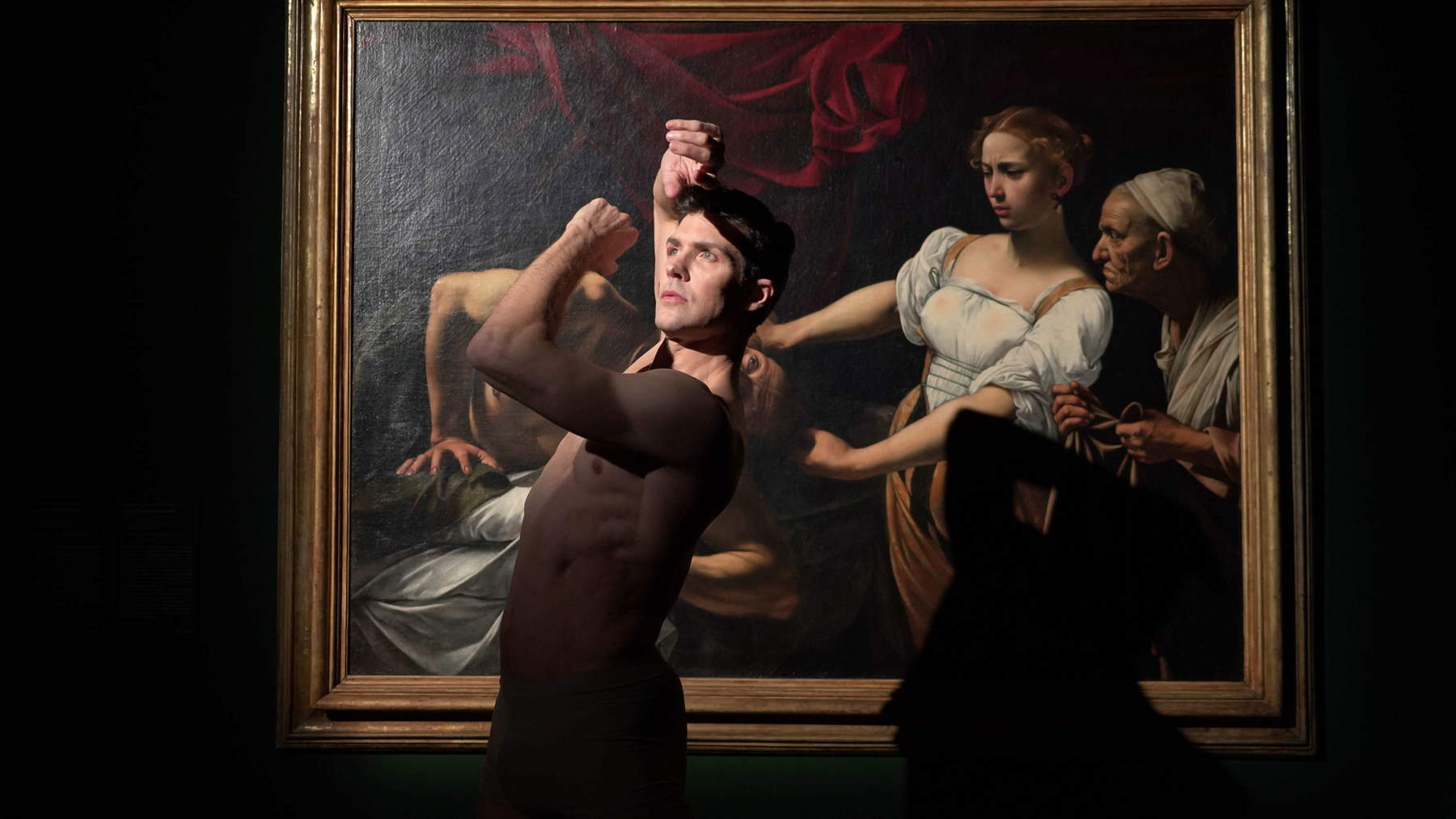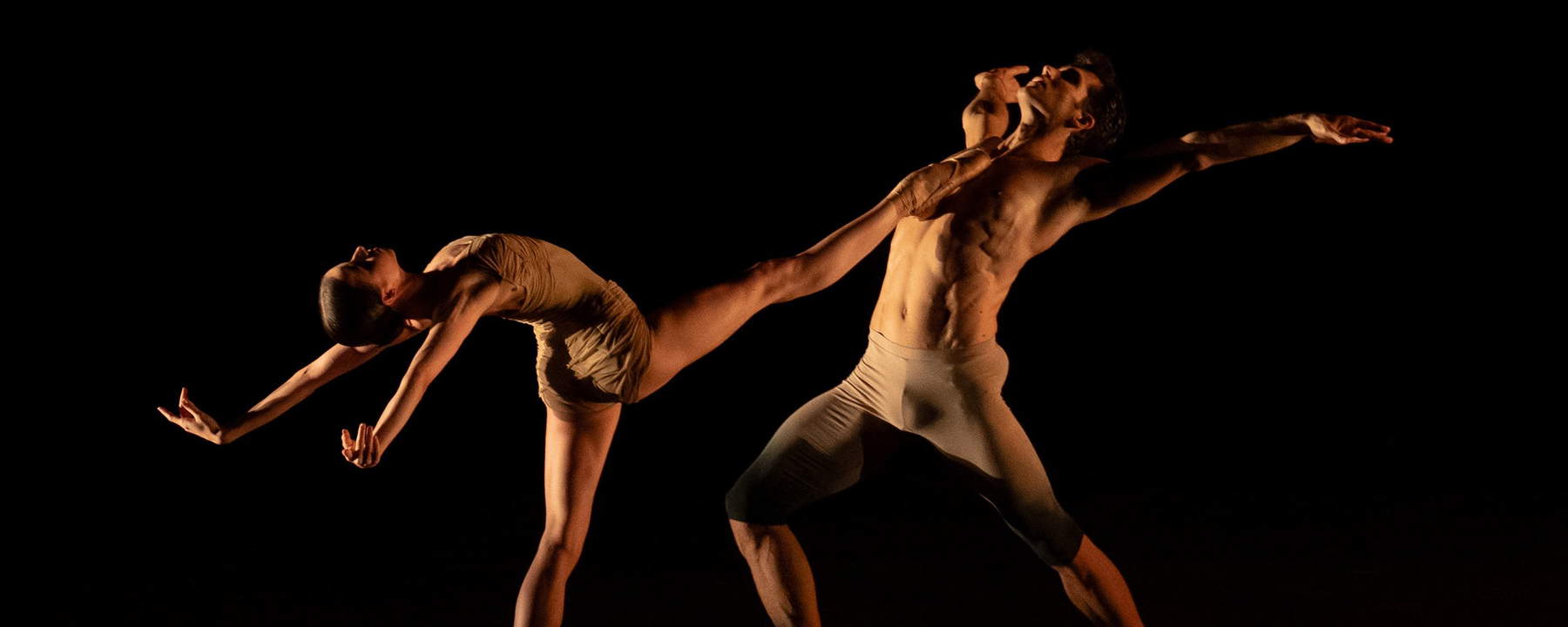In May, choreographer Mauro Bigonzetti’s ballet Caravaggio was presented for the first time in Italy, seventeen years after its debut in 2008 in Berlin. It fell to étoile Roberto Bolle to interpret Caravaggio, who took the show on stage at the Teatro del Maggio Musicale Fiorentino (May 9 to 11), and at Milan’s TAM Teatro Arcimboldi (May 15 to 21). We put some questions to both Roberto Bolle and Mauro Bigonzetti to let them tell us about the emotions and inspirations behind this project and how they both managed to transport the complex figure of Caravaggio and his painting into dance. The interview is by Ilaria Baratta.

IB. You have the task of interpreting, as the great étoile that you are, probably one of the most beloved and most revolutionary painters ever: Caravaggio. How did you feel about masterfully transforming the power of Merisi’s works into dance? Torment and genius are the two aspects that most characterize this artist: how much Caravaggio is there in Roberto Bolle?
Roberto Bolle. Playing Caravaggio was a wonderful experience. He is a brilliant, iconic artist who changed the history of Italian art and not only, because he changed the history of international art. He profoundly marked the artist’s own culture and vision, including the way figures were depicted. There was a great break between before Caravaggio and after Caravaggio. He is an artist who has influenced art for centuries and is still one of the most beloved, one of the most admired, so for me it was a great privilege to be able to play this character, to shape him, to bring him to life, and certainly to bring his genius and his torment to the stage. He is an artist very far from me in terms of the dramatic, tormented parts, in terms of the murder, in terms of the blood that recurs later in his life, an element that is found in the ballet, with the red drape that comes out at the end of the first act and then the blood with which he stains his hands when he kills other characters in this ballet, which then are the beauty, the shadow, the light. These are all elements that recur in his painting. He is a very different artist from me, but that is why it was even more interesting to interpret him; to find in me those keys that are not naturally part of my personality, but are nevertheless inherent. To find the truth of sensations, of feelings that are far from one’s own being. And to bring that to the stage rather than feelings and emotions completely assonant with one’s own being is even more challenging for an artist.
Are you a frequenter of exhibitions? What is your relationship with visual art like? Dance is an extraordinary art form, and I find that it has so much in common with painting.
Well, I really like to go and see exhibitions that are also of very different types than painting. For example of photography I recently saw the one at the Royal Palace by George Hoyningen-Huene. Also at the Royal Palace I really liked Leonor Fini’s exhibition, which is one of the most beautiful exhibitions I’ve seen lately also. Here, it is very important. I think it is very good for me to absorb the vision of other artists, the way certain exhibitions are set up, the colors, the lights, how they are presented. Then always at Palazzo Reale there was Nico Vascellari’s installation. These are all suggestions that you need, that maybe at first you don’t even realize how much they can affect your taste, your creativity, but then it all comes back. Going back to the question about bringing Caravaggio to the stage: He is a very theatrical artist, so he lends himself particularly well to being brought to the stage. We have cutting lights and other lights that can illuminate bodies, shape them. We have some moments with really Caravaggesque lights. It is just a very right pairing between the ballet, the dance, the dancer’s body and Caravaggio, his paintings, his paintings, his light.

How revolutionary do you think dance is and can be?
Dance can be very revolutionary. It has been for a long time, think also of Isadora Duncan in the beginning, or Nižinsky, who broke the mold. Duncan was showing the female body moving under veils, she was very breakthrough, very avant-garde. And even now, dance continues to be revolutionary with so many contemporary choreographers interpreting the present, but also the future, combining it with new technologies brought to the stage with visual effects, with innovative lighting effects.
Here, dance is an expression that comes from the past but always looks very much to the future. It is a continuous creation, with a language that never stops renewing itself. And it can be very inspiring and time-marking.
For years he has been personally involved in bringing dance to everyone, on TV and with very successful events. Does the ballet Caravaggio also go in this direction?
Even the ballet Caravaggio, of course, for me is a way to spread dance, to continue this mission of dissemination that continues over the years with the Rai1 shows, with OnDance that will return to Milan in September. Now also with the Foundation [nda: the Roberto Bolle Foundation, “which aims to support dance in Italy and around the world, with the goal of spreading the artistic, cultural and human values that dance has in it”], with which I continue this path. But also with the ballet Caravaggio brought to theaters and the pairing we managed to create on the occasion of the Rai1 broadcast and the exhibition at Palazzo Barberini. Everything serves to get these messages across more easily to the public, to broaden the audience, to get more people to come to the exhibitions and to the theater, and this is very important. This journey of mine into beauty that started with Caravaggio continues this summer in July with three wonderful events because in wonderful places like the Baths of Caracalla, the Greek Theater of Taormina and the Arena of Verona. Two performances in Caracalla on July 15 and 16, in Taormina on July 18 and on July 22 and 23 in the magical Arena of Verona. Even dancing with all this history, this wonder behind us is something that greatly affects bringing dance everyone.

IB. Seventeen years after its debut in Berlin, the ballet Caravaggio finally arrived in Italy this year, in May. What does it mean to you to have brought it to our country for the first time?
Mauro Bigonzetti. I am super happy to have brought this ballet to Italy after seventeen years, especially in the context in which we presented it and that is with Roberto Bolle, first thing, and then with the Maggio Musicale Fiorentino and with the Teatro Arcimboldi in Milan. I am overjoyed because Roberto has both the maturity, sensitivity and physicality to do such a role. In my opinion it is just the perfect time for Roberto to play such a role, and in fact he has played it in my opinion in a sum manner. I am overjoyed because it makes me proud, it gives me so much satisfaction; 60-70% of my work has all been done abroad, in Italy it is almost unknown, in short. So to bring this ballet to Italy after so many years for me was a huge satisfaction, then, I repeat, with Roberto Bolle even more.
Why did you choose to dedicate a ballet to Caravaggio? Did you follow a particular passion of yours for Merisi in your choice, or did the high-sounding name that captivates audiences also have an influence?
This work seventeen years ago I was commissioned by the Deutsche Oper Berlin with the Berlin Staatsballett. They then asked me for a subject that had to do with Italian culture and art, and I chose Caravaggio. Why? Because I went to the Art Institute anyway, so I lived my younger years immersed in the fine arts. Logically Caravaggio was one of the many painters I loved, maybe the one I loved the most, so let’s say I was carrying it inside and hatching this ballet for so many years. Caravaggio is a character that I loved so much in the past and at the right time he came back out with this request from the Berlin theater to do something with a strongly Italian mark.

What fascinates you about this artist?
Everything about Caravaggio fascinates me: the life, the artistic production and more than anything else the mystery around this character. He has always been a myth for me, both his production and his life, although it is a life, as I said, full of mysteries and full of unknowns, but it is precisely this mystery, this magic that there is around this character that has always fascinated me.
How did you manage to transform Caravaggio’s art into dance? What elements or aspects did you focus on the most?
I don’t know if I managed to transform Caravaggio’s art into dance, because this is a, shall we say, titanic operation. But certainly the aspects I worked on were the vibrations that come out of Caravaggio’s bodies, the tensions of the bodies, the muscles and the skin of the protagonists of Caravaggio’s paintings. The tensions of the bodies are the thing that inspired me the most. Logically we did not go to reproduce in a symbolic or figurative way the Caravaggesque paintings or compositions, but it is these tensions of the bodies that pushed me so the creativity to do a certain kind of work. This tension is the flame and also the main thrust of the work.
What about the music, what pieces were chosen?
Regarding the music with maestro Bruno Moretti, from the very beginning we set ourselves this idea of doing something that had to do with the historical period of Caravaggio, and right at that time, at the same time that Caravaggio was born, four years before, Claudio Monteverdi was also born, so they live in the same historical period, and so it seemed like a very good idea to make a parallel also with music, between music and painting. Maestro Bruno Moretti took clones from Claudio Monteverdi’s most famous and most important works, made them symphonic, symphonic music for large orchestra, which, in short, is quite peculiar, because all music in that historical period was written for very small ensembles; the concept of symphonism did not exist yet. Moretti made this symphonic music by taking some small themes or small clones and developing it in a more twentieth-century, more symphonic way.
Warning: the translation into English of the original Italian article was created using automatic tools. We undertake to review all articles, but we do not guarantee the total absence of inaccuracies in the translation due to the program. You can find the original by clicking on the ITA button. If you find any mistake,please contact us.